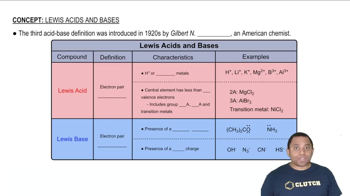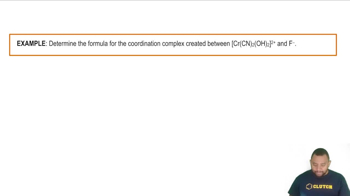Here are the essential concepts you must grasp in order to answer the question correctly.
Oxidation States
Oxidation states indicate the degree of oxidation of an atom in a compound. In coordination chemistry, metals can exist in various oxidation states, with +2 and +3 being common for transition metals. The +3 oxidation state typically has a higher positive charge, which can lead to stronger interactions with ligands due to increased electrostatic attraction.
Recommended video:
Lewis Acid-Base Theory
Lewis acid-base theory defines acids as electron pair acceptors and bases as electron pair donors. In the context of coordination compounds, the metal ion acts as a Lewis acid, while the ligands function as Lewis bases. The stronger the Lewis acid (higher oxidation state), the more effectively it can stabilize the coordination complex through stronger metal-ligand interactions.
Recommended video:
Coordination Complex Stability
The stability of coordination complexes is influenced by factors such as the charge of the metal ion, the nature of the ligands, and the overall geometry of the complex. Generally, complexes with metal ions in higher oxidation states exhibit greater stability due to stronger metal-ligand bonds, which arise from enhanced electrostatic interactions and covalent character in the bonding.
Recommended video:
Coordination Complexes Example





